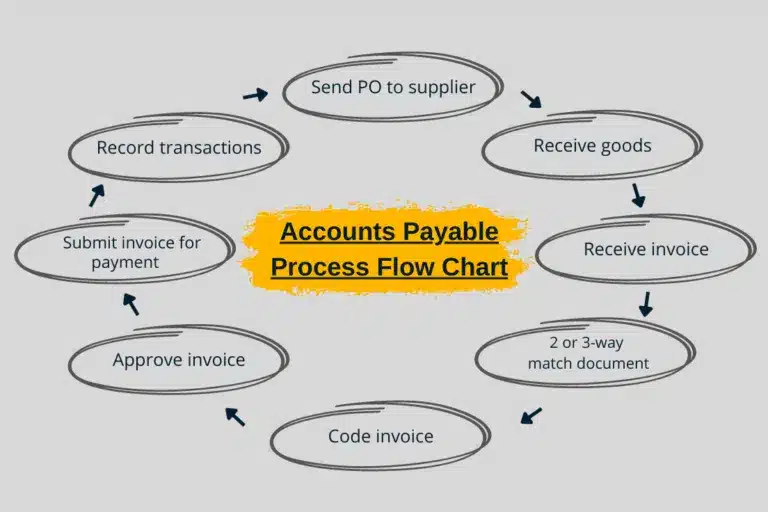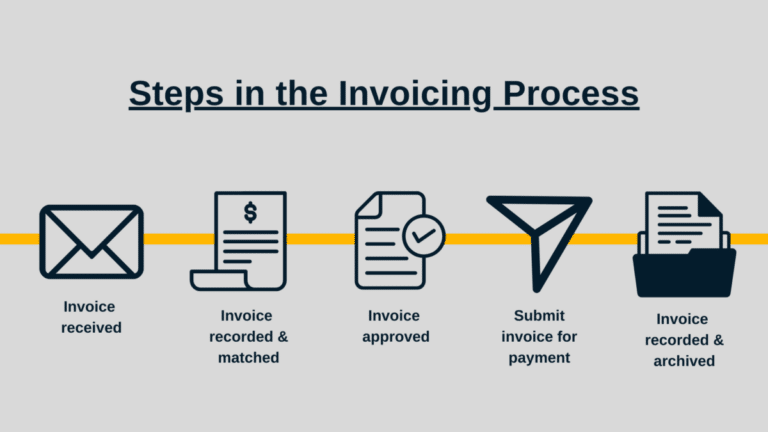Table of Contents
No matter the size of a business, success is generally measured by the difference between the expenditure and revenue cycle. When it comes to expenditure and purchasing, having an efficient accounts payable process is vital to tracking performance. In the business process known as “procure to pay” or P2P, accounts payable is a critical component. It encompasses the whole cycle an AP department goes through to complete and archive a purchase.
Without this setup, a business will fall behind on bills, straining relationships and negatively affecting revenue. Thus, it’s important to understand what the full cycle accounts payable process involves and how to streamline it at every corner.
In this article, we’ll look at what a full cycle accounts payable process entails, a useful accounts payable process flow chart, challenges faced in the AP cycle, and how automation is the future for accounts payable.
What is the Full Cycle Accounts Payable Process?
Full cycle accounts payable, as the name implies, is the complete cycle that an accounts payable department goes through to complete and archive a purchase. From receiving and approving invoices to paying vendors and suppliers for their goods and services, the AP process is critical to any business. It is part of the procure-to-pay business process and mainly centers around effective invoice management.
The end-to-end AP process includes:
- Documenting and transmitting the purchase order
- Approval process
- Invoice processing
- Two-way or three-way match (PO and receiving report)
- Invoice coding
- Transferring funds to pay invoices
- Recording all transactions
At the end of the day, the main AP process can be broken down into four categories: invoice capture, invoice approval, payment authorization, and payment execution.
Although the bookkeeping for all of this paperwork may sound like an arduous task, especially in high-volume offices, today’s accounting software significantly reduces the burden and streamlines invoice payments for an AP team. Automation software can easily match invoices and eliminate data entry, speeding up the payable workflow and allowing staff to focus more on business growth.
Accounts Payable Process Flow Chart

Here are the key steps in an accounts payable process flow chart:
- Send purchase order to the supplier
- Receive and inspect goods
- Receive invoice
- Match document 2 or 3 ways
- Code invoice
- Route invoice for approval
- Submit invoice for payment
- Record all transactions in the GL
Invoice Processing Flow Chart

Here are the key steps in an invoice processing flow chart:
- Receive supplier invoices
- Match document 2 or 3 ways
- Route invoice for approval
- Submit invoice for payment
- Record all transactions in the GL
The Flow of Full Cycle Accounts Payable
The full cycle accounts payable process can be thought of as flowing in two directions, upstream and downstream.
- Upstream. This is where procurement takes place. In this phase, the business will conduct strategic sourcing, supply chain management, and negotiate contracts. Payment terms are negotiated during this first half, and purchases can be monitored for risk.
- Downstream. In the second half, goods and services are received with an invoice that is verified and paid. As with the upstream phase, risk management is a crucial component.
In both streams, it’s important to continually strive to reduce human error, maximize efficiency, and incorporate modifications to achieve greater productivity and stronger internal controls.
Challenges of the Accounts Payable Cycle
The AP department is a busy place and is typically awash in manual processes, whether that’s cash management, paper invoices, data entry, or double-checking due dates. There are many challenges presented and a variety of systems working in tandem to process payment.
For many companies, both small businesses and larger enterprises, AP goals face a multitude of obstacles like outdated equipment, limited staff, lack of planning, cash flow issues, and manual bottlenecks. Other challenges include:
- Duplicate payments or double-entry
- Lost/missing vendor invoices
- Diluted approval process
- Inaccurate balance sheet
- Late payments and late fees
Like a clock, the accounting process relies on a variety of gears to operate seamlessly and function properly. Any small slip-up can result in strained relationships, late payments, and loss of discounts.
That’s why many organizations and small business owners are turning to AP automation to eliminate discrepancies, shorten invoice approval, make timely payments, and ensure efficiency.
Automation: The Answer You’ve Been Looking For
For analyzing financial statements, expense reports, and the general ledger, a small business typically turns to a spreadsheet for tracking.
However, accounts payable automation makes every single aspect of the process simpler. Your team will no longer be scrambling for signatures, wasting valuable time with manual data entry tasks, or devoting company money (and intangible human resources like creativity) to largely repetitive, unnecessary processes.
A company is also helping the environment (and saving money on office supplies), as an automated AP process allows you to go entirely paperless. Today, many manual tasks have been consolidated thanks to advanced automation solutions that simplify a variety of jobs.
With an ERP system set up, you’ll be able to automatically match invoices to purchase orders and enter them into your system without any human intervention. Invoice data capture can become an instant process with the use of online supplier portals. These days, AP doesn’t even have to scan a supplier invoice if they have the right equipment.
The end result of all of this is that every vendor invoice that comes through your business becomes an electronic invoice. The dependence on physical paper (and many aspects of office supplies) has been eliminated to create a leaner department. It allows for a new surplus of resources to redirect to more profitable areas.
Accounting Software for Full Cycle Accounts Payable
Invoicing, data entry, cash flow tracking, and other functions in the payable process today are facilitated by advanced digital tools; performing a wide variety of tasks that were unthinkable just a few decades ago.
In its most basic form, a digital accounting system for a full cycle accounts payable office could be an Excel spreadsheet. For analyzing expense reports, financial statements, and the general ledger, a spreadsheet works well for a small AP office.
A larger business will need much more. It will need something to manage multiple vendor relationships, vendor payments, performance metrics, and your payable team. That’s where powerful AP platforms come in.
Quickbooks
Intuit’s Quickbooks offers several accounting features that spreadsheets can’t deliver. For example:
- Audit Trail: This tool displays a history of all changes made to a transaction, including when the edits were made, who made the modifications, and what the specific changes were.
- Roles and permissions: It’s possible to establish custom permissions for various types of employees. For example, you can create a custom login for accountants.
Tipalti
For ERP integration and global payments capability, Tipalti offers a suite of software tools that can accomplish many tasks. These include:
- Ability to send payments to suppliers in over 180 countries.
- Invoice processing with optical character recognition (OCR).
- VAT and tax compliance with multiple tax forms.
- Compatibility with Quickbooks.
Summing It Up
In many companies today, AP has become a bottleneck and a drain on valuable time and resources. Automation through AP software makes every invoice an e-invoice. Vendor payments are quick and efficient, which solidifies vendor relationships and streamlines the payment process.
A business can save vital employee time and boost productivity, while investing in the mission of building a better, more successful company.
Although end-to-end accounts payable entails a great deal of red tape, it doesn’t have to be a tedious process. With adequate knowledge, experience, and tools, every AP office can efficiently manage cash flow and payment processing. All it takes are the right tools, and that starts with an intelligent AP automation system.

